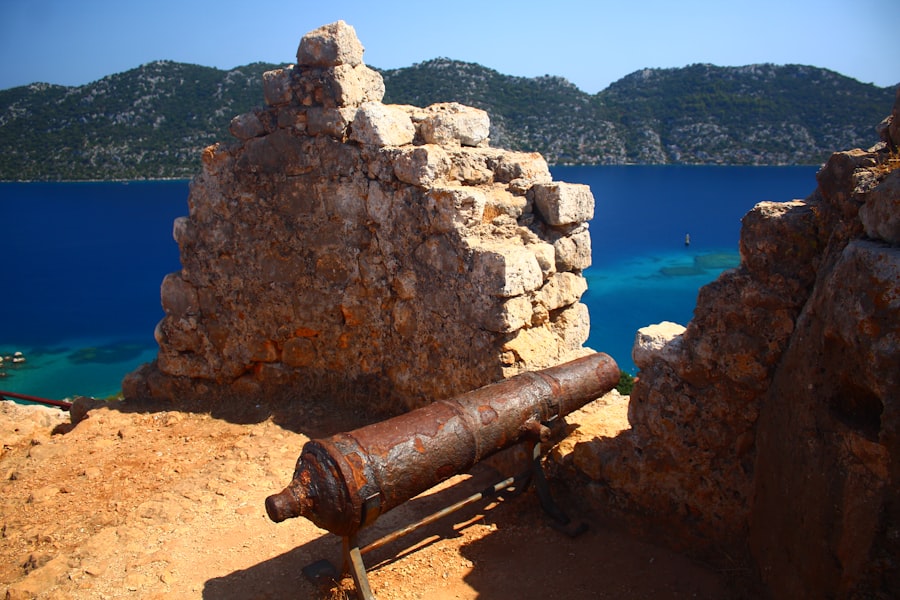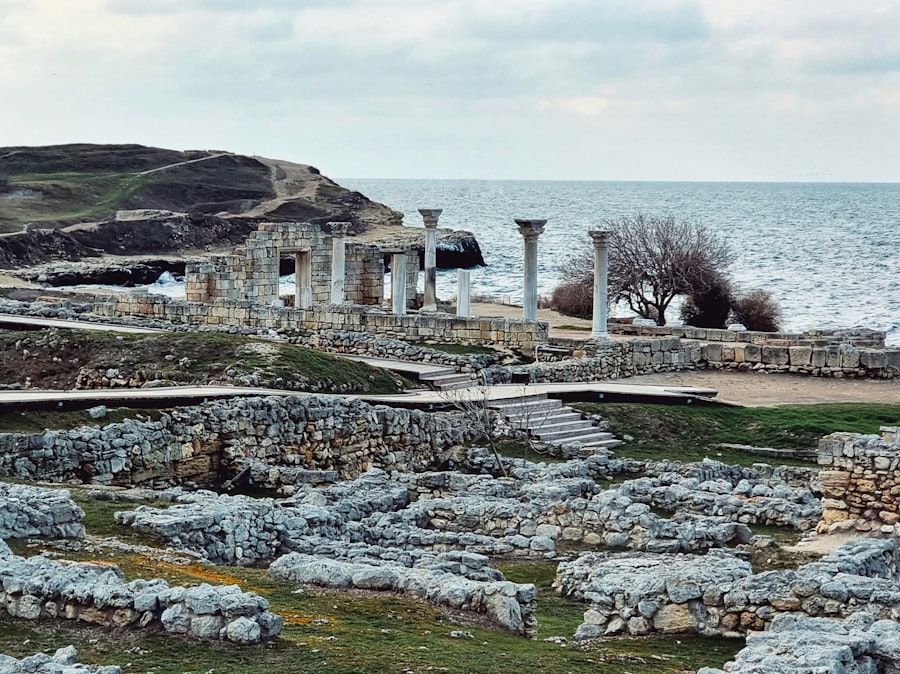Ancient coastlines hold a significant place in the study of human history and the evolution of civilizations. These geographical features are not merely remnants of the past; they are vital indicators of how ancient societies interacted with their environment. The coastlines served as critical hubs for trade, migration, and cultural exchange, shaping the development of communities and influencing their social structures.
By examining these ancient shorelines, researchers can glean insights into the lifestyles, economies, and technologies of early human populations. Moreover, ancient coastlines provide a window into the climatic conditions of bygone eras. They reveal how sea levels fluctuated and how these changes impacted human settlement patterns.
Understanding these dynamics is crucial for comprehending the resilience and adaptability of ancient peoples in the face of environmental challenges. As such, the study of ancient coastlines is not only about understanding the past but also about drawing lessons that can inform contemporary society’s approach to coastal management and environmental sustainability.
Key Takeaways
- Ancient coastlines are important for understanding human history, geological processes, and ecological significance.
- Mapping and understanding ancient coastlines can provide valuable insights into past civilizations and environmental changes.
- Technology plays a crucial role in exploring ancient coastlines, allowing for more accurate mapping and data collection.
- Climate change has a significant impact on ancient coastlines, leading to erosion, sea level rise, and loss of archaeological sites.
- Archaeological discoveries along ancient coastlines offer valuable clues about early human migration patterns and cultural development.
Mapping and Understanding Ancient Coastlines
Mapping ancient coastlines involves a multidisciplinary approach that combines geology, archaeology, and historical analysis. Researchers utilize various techniques to reconstruct these coastlines, including sediment analysis, radiocarbon dating, and remote sensing technologies. By piecing together geological evidence, scientists can create detailed maps that illustrate how coastlines have shifted over millennia due to natural processes such as erosion, sediment deposition, and tectonic activity.
Understanding these ancient coastlines also requires an examination of historical texts and oral traditions that may provide context for the geographical changes observed. Ancient civilizations often documented their surroundings, offering valuable insights into how they perceived and interacted with their coastal environments. By integrating archaeological findings with historical narratives, scholars can develop a more comprehensive understanding of how ancient peoples navigated and utilized their coastal landscapes.
The Role of Technology in Exploring Ancient Coastlines

The advent of modern technology has revolutionized the exploration of ancient coastlines. Techniques such as LiDAR (Light Detection and Ranging) and GIS (Geographic Information Systems) have enabled researchers to visualize and analyze coastal landscapes with unprecedented precision. These tools allow for the identification of submerged features that may have been lost to rising sea levels or erosion, revealing hidden aspects of ancient settlements and trade routes.
Additionally, underwater archaeology has benefited immensely from advancements in technology. Remote-operated vehicles (ROVs) and sonar mapping have opened up new frontiers in exploring submerged coastlines. These innovations not only enhance the ability to locate artifacts but also facilitate the study of ancient maritime practices.
As technology continues to evolve, it promises to unveil even more secrets hidden beneath the waves, further enriching our understanding of ancient coastal civilizations.
The Impact of Climate Change on Ancient Coastlines
| Region | Time Period | Sea Level Rise (meters) | Impact |
|---|---|---|---|
| Mediterranean | 3000-1000 BCE | 1-2 | Submerged ancient ports and coastal settlements |
| North America | 1000-1500 CE | 0.5-1 | Loss of coastal habitats and erosion of archaeological sites |
| South Asia | 2000-1500 BCE | 2-3 | Submersion of ancient cities and cultural sites |
Climate change has had a profound impact on coastlines throughout history, shaping both natural landscapes and human societies. Rising sea levels, increased storm intensity, and changing weather patterns have all contributed to the erosion and transformation of ancient coastlines. By studying these changes, researchers can better understand how past civilizations adapted to environmental shifts and what strategies they employed to mitigate the effects of climate change.
The lessons learned from ancient coastlines are particularly relevant today as modern societies grapple with similar challenges. Understanding how ancient peoples responded to rising sea levels or extreme weather events can inform contemporary coastal management practices. By examining historical resilience strategies, communities can develop more effective approaches to protect their coastal environments in the face of ongoing climate change.
Archaeological Discoveries along Ancient Coastlines
Archaeological discoveries along ancient coastlines have yielded a wealth of information about past human activities and interactions with the marine environment. Excavations in coastal areas often reveal artifacts such as tools, pottery, and remnants of structures that provide insight into daily life, trade networks, and cultural practices. These findings help reconstruct the social fabric of ancient societies and illustrate their reliance on coastal resources.
Such discoveries not only enhance understanding of economic exchanges but also highlight the importance of coastal areas as centers of cultural interaction. As archaeologists continue to explore these regions, they uncover new narratives that enrich our understanding of human history.
The Connection Between Ancient Coastlines and Human Migration

Ancient coastlines played a pivotal role in human migration patterns throughout history. These geographical features often served as natural corridors for movement, facilitating the spread of populations across vast distances. Coastal areas provided access to abundant resources such as fish and shellfish, making them attractive locations for early human settlements.
As populations grew, these coastal communities became launching points for further exploration and migration. The study of ancient coastlines reveals how environmental factors influenced migration decisions. For instance, changes in sea levels or climate conditions could either encourage or hinder movement along coastlines.
By analyzing archaeological evidence from coastal sites, researchers can trace migration routes and understand how ancient peoples adapted to shifting landscapes over time.
Preserving and Protecting Ancient Coastlines
The preservation and protection of ancient coastlines are critical for maintaining cultural heritage and biodiversity. As modern development encroaches upon these fragile environments, there is an urgent need for conservation efforts that balance economic growth with environmental sustainability. Protecting ancient coastlines not only safeguards archaeological sites but also preserves ecosystems that have evolved over millennia.
Efforts to protect these areas often involve collaboration between governments, local communities, and conservation organizations. Initiatives may include establishing marine protected areas, implementing sustainable tourism practices, and promoting public awareness about the importance of preserving coastal heritage. By fostering a sense of stewardship among local populations, it becomes possible to ensure that ancient coastlines remain intact for future generations to study and appreciate.
The Influence of Ancient Coastlines on Modern Coastal Communities
The legacy of ancient coastlines continues to influence modern coastal communities in various ways. Many contemporary societies still rely on coastal resources for their livelihoods, echoing the practices of their ancestors. Fishing, tourism, and trade remain integral components of coastal economies, demonstrating a continuity of human interaction with these environments.
Furthermore, ancient coastlines often shape cultural identities within modern communities. Local traditions, folklore, and festivals may be rooted in historical connections to the sea, reflecting a deep-seated relationship with coastal landscapes. By recognizing this heritage, communities can foster a sense of pride in their history while promoting sustainable practices that honor their ancestors’ wisdom.
Studying Ancient Coastlines to Understand Geological Processes
The study of ancient coastlines provides valuable insights into geological processes that have shaped the Earth over millions of years. By examining sediment layers and fossil records along these shorelines, scientists can reconstruct past environments and understand how tectonic activity has influenced coastline formation. This research contributes to broader knowledge about Earth’s geological history and informs predictions about future changes.
Additionally, understanding geological processes at ancient coastlines can help mitigate risks associated with natural disasters such as tsunamis or coastal erosion. By analyzing historical data on coastline shifts and geological events, researchers can develop models that predict potential hazards for modern coastal communities. This knowledge is essential for effective disaster preparedness and risk management strategies.
The Ecological Significance of Ancient Coastlines
Ancient coastlines are ecologically significant as they support diverse ecosystems that have evolved over time. These environments serve as critical habitats for numerous species, including fish, birds, and marine mammals. The interplay between land and sea creates unique ecological niches that contribute to biodiversity and overall ecosystem health.
Moreover, ancient coastlines often act as natural buffers against environmental threats such as storms and rising sea levels. Coastal wetlands, mangroves, and coral reefs play essential roles in protecting inland areas from erosion while providing vital resources for both wildlife and human populations. Understanding the ecological significance of these environments is crucial for developing conservation strategies that ensure their continued health and resilience.
Future Research and Exploration of Ancient Coastlines
The future of research and exploration along ancient coastlines holds great promise as new technologies emerge and interdisciplinary approaches continue to evolve. As scientists delve deeper into these historical landscapes, they will undoubtedly uncover new findings that challenge existing narratives about human history and environmental change. Future research may focus on integrating traditional ecological knowledge with scientific methodologies to create holistic approaches to studying ancient coastlines.
Collaborations between archaeologists, geologists, ecologists, and local communities will be essential in fostering a comprehensive understanding of these complex environments.
In the fascinating exploration of ancient coastlines, the article “The Entity That Knew Ancient Coastlines” delves into the mysterious knowledge possessed by ancient civilizations regarding geographical formations long lost to time. For those intrigued by the enigmatic aspects of history and the potential connections to extraterrestrial influences, a related article can be found on the X File Findings website. This article expands on the themes of ancient knowledge and unexplained phenomena, offering a broader context to the mysteries discussed. To explore more about these intriguing topics, you can visit the related article on X File Findings.
WATCH THIS! NSA Agent’s Final Warning: The Alien I Spoke With Knew Everything About Earth
FAQs
What is the entity that knew ancient coastlines?
The entity that knew ancient coastlines refers to a new artificial intelligence model developed by researchers that can accurately predict the location of ancient coastlines.
How does the entity predict ancient coastlines?
The entity uses a combination of machine learning algorithms and geological data to predict the location of ancient coastlines. It analyzes factors such as sea level changes, tectonic activity, and sediment deposits to make its predictions.
Why is it important to know the location of ancient coastlines?
Knowing the location of ancient coastlines can provide valuable insights into past climate conditions, sea level changes, and geological processes. This information can help scientists better understand the Earth’s history and make more accurate predictions about future environmental changes.
What are the potential applications of this technology?
The technology could be used to study ancient civilizations, map out potential archaeological sites, and even aid in the search for natural resources such as oil and gas deposits.
How accurate is the entity’s predictions?
The entity has been shown to make predictions with a high degree of accuracy, often matching up with known geological evidence of ancient coastlines. However, like any model, its predictions are based on the data it is trained on and may not always be 100% accurate.
